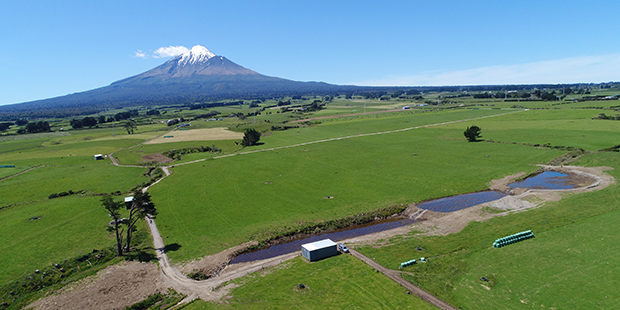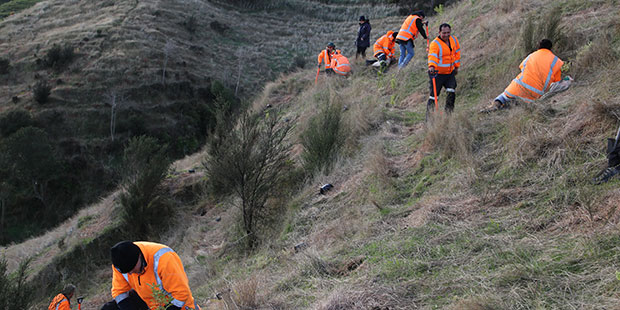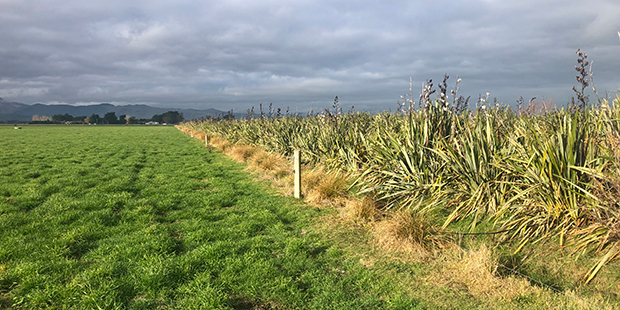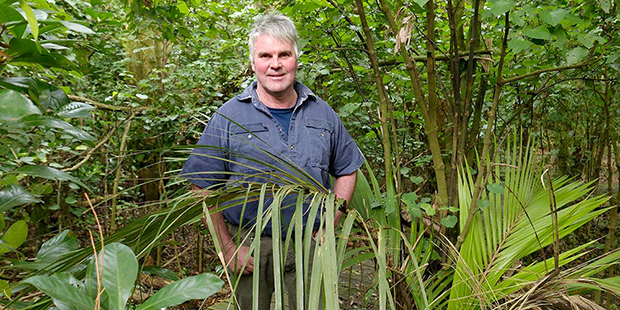Wetland aims for water quality rise
Taranaki farmers develop passion for sustainable farming with new wetland.
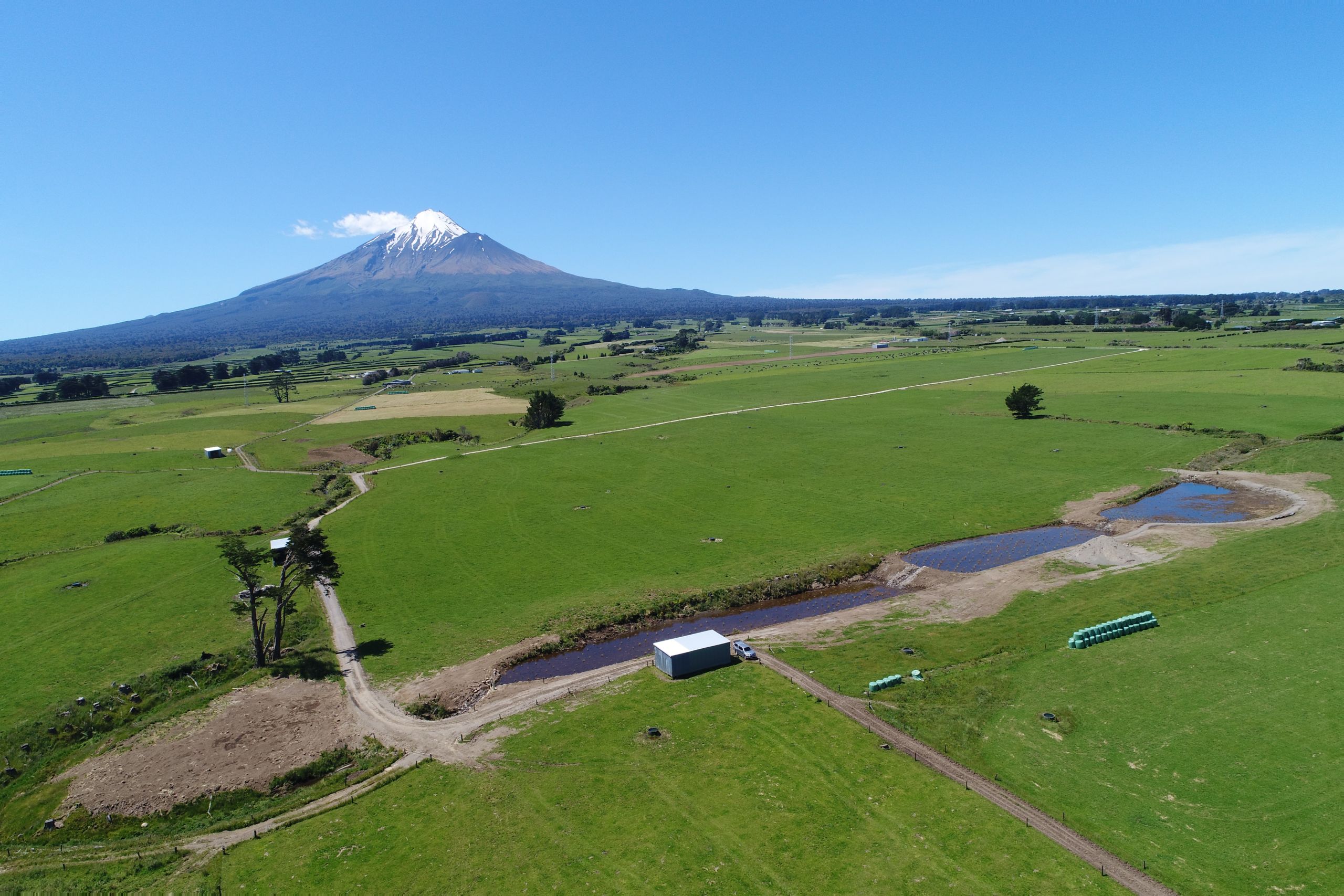

Fifteen years ago, South Taranaki dairy farmers Donna and Philip Cram began their environmental journey by wanting to stop finding cows stuck when walking through streams on their property.
Now the couple’s passion for sustainable farming practices, improving environmental and water quality, and a predator-free district, has seen them aiming to set up a catchment group in the Oeo Catchment.
Donna has had national and regional roles in DairyNZ’s Dairy Environment Leaders – and they’ve galvanised their farming and school communities.
The Crams have owned the original 77ha property at Awatuna, on the southern boundary of Egmont National Park between Stratford and Opunake, for 18 years, adding a further 40ha five years ago. They have two grown children, Aleisha and James. Donna's parents, Winston and Delva Kidd, and her brother, farm nearby.
In early days, they grazed their cows to the water's edge and the animals walked through the streams – something they now think “horrific” but it was what was done in those days.
That’s all changed now. Working with the Taranaki Regional Council on a riparian protection scheme, they’ve fenced all 9.75km of the Oeo Stream, a tributary flowing through their property. They’ve built three culverts as “cow crossings” and planted 10,700 native plants over about 10 years on river banks and the farm – with help from their children and Opunake High School students.
Five years ago Philip identified an area receiving a large amount of water in a catchment area. With help from Taranaki Regional Council and NIWA, a former stream bed was seen as potential for being re-engineered into a wetland to reduce nutrients, bacteria and sediment leaching into the waterways.
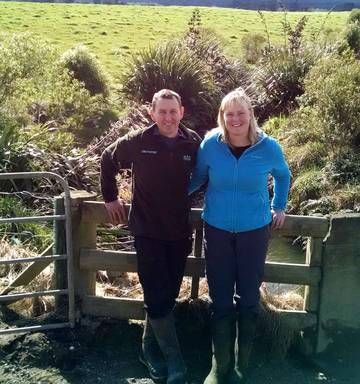
Philip and Donna Cram. Photo / NZH.
Philip and Donna Cram. Photo / NZH.
It’s now a three-cell constructed wetland covering 4500sq m and about 160m long in a setting that reflects Mt Taranaki. Over lockdown Philip created a path around the wetland, fenced it with recycled plastic posts and built a small pier; the Crams hope local schools will visit and learn about bird, plant and fresh water ecology.
They also created a 10m buffer zone between crops and the fenced waterways: “We’re really careful where we crop now,” Donna says.
While the wetland is “a really peaceful place to be with amazing views,” Donna says it has a serious purpose. “We will have real data on reduction of nutrients in our run-off. That’s very valuable to us and the farmers around us.”
Regan Phipps, the council’s science manager for hydrology/biology, says the regional body, DairyNZ and NIWA are monitoring and sampling the wetland to assess how efficient it is in reducing nitrogen and phosphorous, E. coli and sediment in the catchment.
It’s part of a five-year national “Interceptor” project to assess the performance of constructed wetlands and riparian buffers across a range of landscape and climate settings.
Phipps says: “Monitoring has only recently commenced but the early signs are encouraging, particularly with regard to nitrate removal.”
Sustainable farming practices are the foundation of the Crams’ business and lifestyle. Donna says: “We look at every aspect of our business from fertiliser to breeding to cow numbers. Sustainability is about economics, environment and the social aspects of people and community.
“We’ve reduced our cow numbers by about 10 per cent over the last two years to around 250. We’re only running a stocking rate of about 2.35 plus young stock – and may reduce further yet.”
They used to discharge treated dairy effluent to the tributary until switching to land-based treatment five years ago, creating a pond capable of holding 90 days’ storage from their two oxidation ponds. They now spread effluent over 24ha and expect savings on fertiliser will ultimately pay for the development.
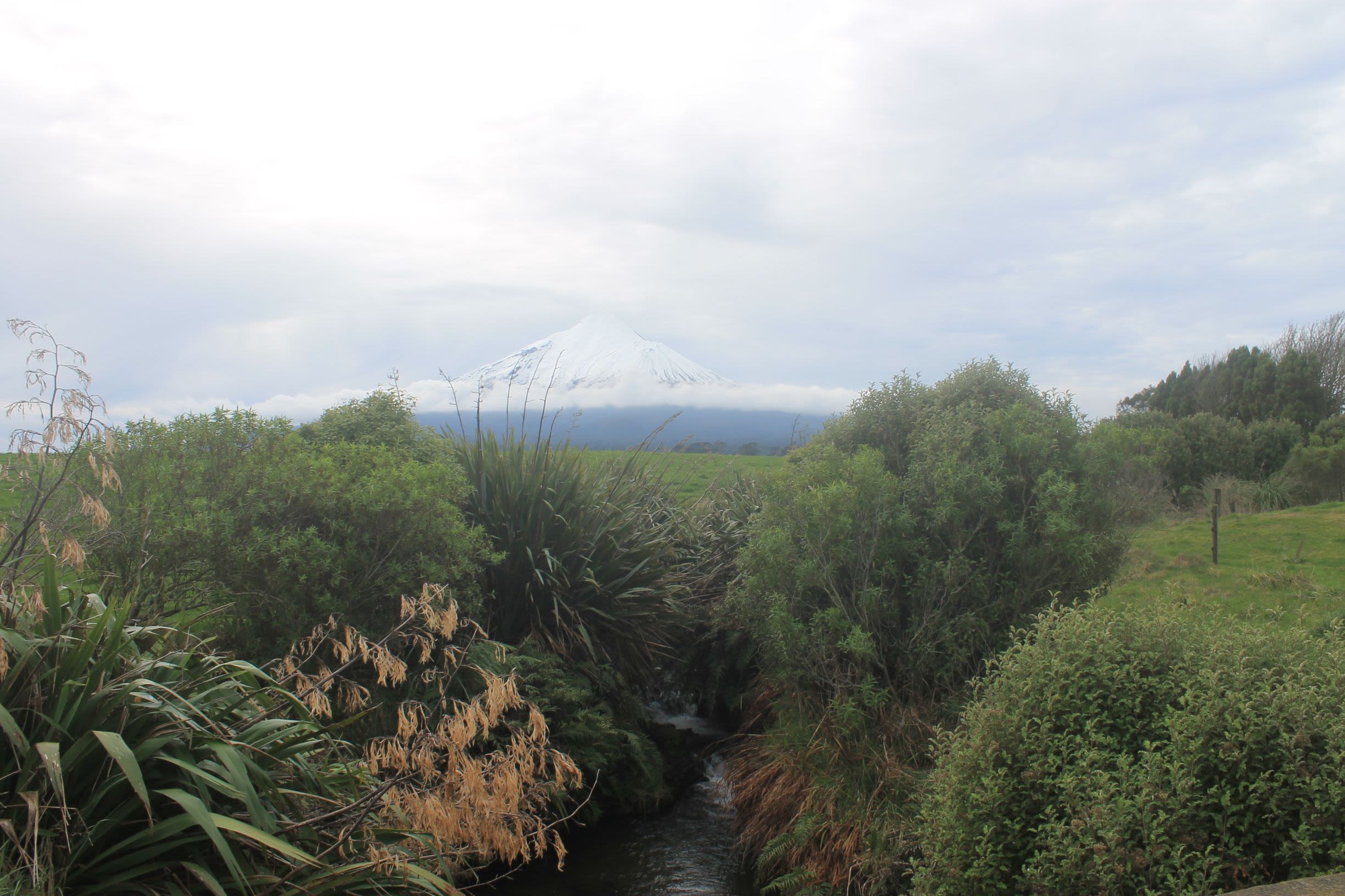
Photo / Supplied.
Photo / Supplied.
“Every paddock is soil-tested now so we’re looking only at putting on fertiliser that’s absolutely needed. Our pastures are quite different to four or five years ago – a lot bigger, healthier clovers.”
The Crams’ concerns don’t stop at their farm gate. They lead a community project rolling out the Predator-Free NZ programme and promoting possum control.
Donna says: “We heard about Predator-Free and I really wanted it for our farm because I want the birds back in our garden.” She approached the council, who told her that if they could gain support from 70-80 per cent of the farms around them, the council would bring Predator-Free to their area.
Say no more: More than 30 farmers were on board, plus the local Auroa Primary School. The Crams are now connected into a high-tech system which emails the farmers’ phones when a pest enters one of the area’s 550 traps.
“We’re quite into it. We've caught four or five stoats on our farm, and hedgehogs and rats.”
Auroa School deputy principal Myles Webb and children have designed a lure that tricks stoats, weasels and the like into thinking they’ve heard a wounded rabbit. The project has received funding from Venture Taranaki’s Curious Minds and will fund cameras and further lures.
“What's really great about that is the school and community working together; that’s what we really want,” Donna says.
The Crams thought they didn’t have a possum problem on the farm but removed 28 in less than six weeks. Possum control doesn’t fall under the Predator-Free brief and the Crams are also seeing more possums on the road.
Donna says the motivation for their activities arose from winning the 2016 regional council award for environmental stewardship, sustainable dairy farming and riparian management.
“I ended up in Wellington as part of the Dairy Environment Leaders’ Forum. I’ve been in DEL for about three years and now I’m chairperson of the Taranaki DEL. I’m also part of Taranaki Federated Farmers dairy committee and a new pan-sector group of Taranaki farmers looking to help farmers get on the front foot with the rate of change and strengthening rural communities.
“Our Taranaki DEL group is made up of a great group of forward-thinking farmers who’ve a real connection to their land. I wouldn’t say we’re environmentalists but, for this group, it’s about doing the right thing for our land long-term. For Philip and me, it’s very much about that. We are all learning, the farmers, the regulatory bodies and the scientists –and we believe we can farm sustainably.”



